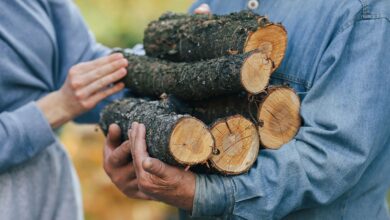Agricultural expansion has shaped human civilization for centuries, turning forests into farms, valleys into villages, and innovation into industry. Though it is the cornerstone of global food security and driving economies, it is also one of the main driving forces behind deforestation, biodiversity loss, and climate change.
Table of Contents
Agricultural expansion is one of the major causes of deforestation. It spreads geographical beauty and its shades to the rest of the world. Agriculture’s green blanket reflects the sun-kissed nature and other landscapes by providing food and fields for animals and humans.
As the world confronts new environmental and population challenges, knowing and improving how we grow food is more important than ever.
What is the Agricultural Expansion?
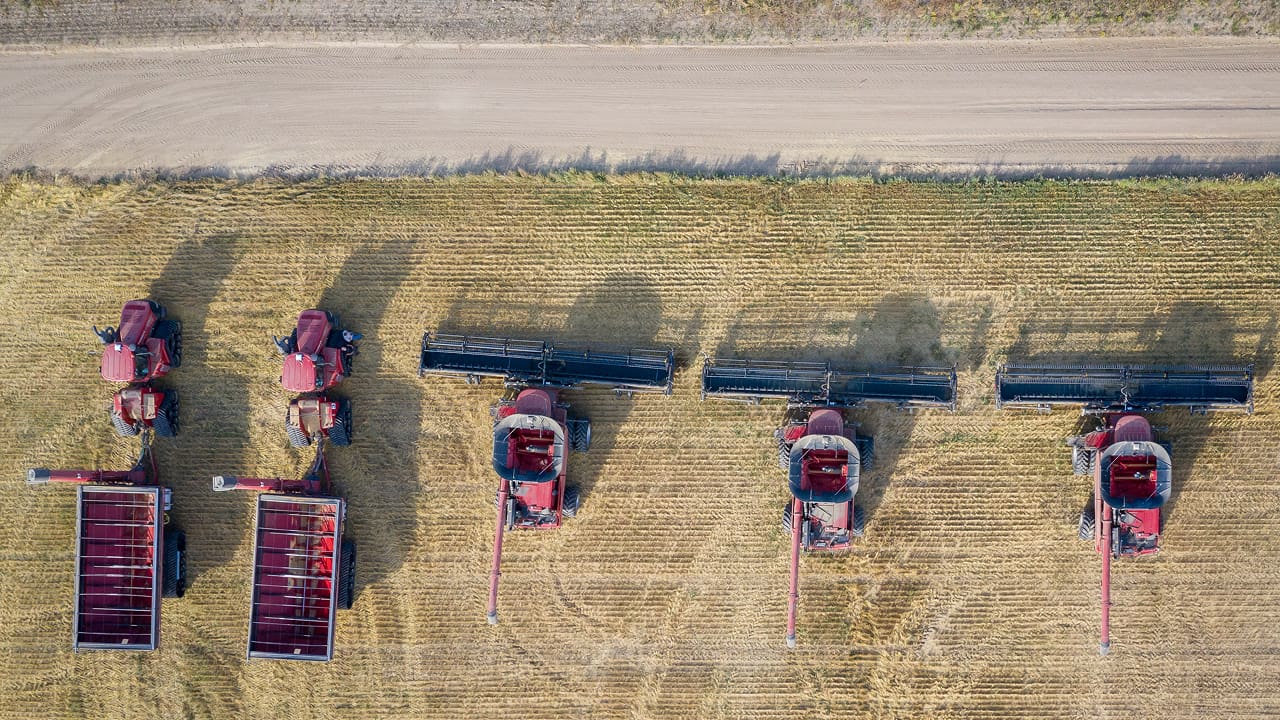
By term, we know this is all about the expansion of resources, land, and economics in agriculture. There is a diverse range of productivity on which agriculture depends.
Land area, crop, livestock productivity, water management, soil fertility, genetic variation, Insecticidal management, climate flexibility, and technological support are the aspects of its expansion. It involves the procedure of cultivation, practices, and investment in agricultural infrastructures.
It has several pros and cons, as;
Benefits of Agricultural Expansion
There are several benefits we can get from rural growth, such as;
- Increased food production,
- Economic growth,
- Poverty reduction,
- Job creation,
- Rural development,
- Improved infrastructure, and
- Technological innovation.
Environmental and Social Drawbacks
Several disadvantages come with this increment of modernism, such as;
- Deforestation Increment,
- Habitat loss,
- Biodiversity decline,
- Soil degradation,
- Water depletion,
- Climate change,
- Land conflicts, and
- Social inequality.
What Drives Farming Expansion?
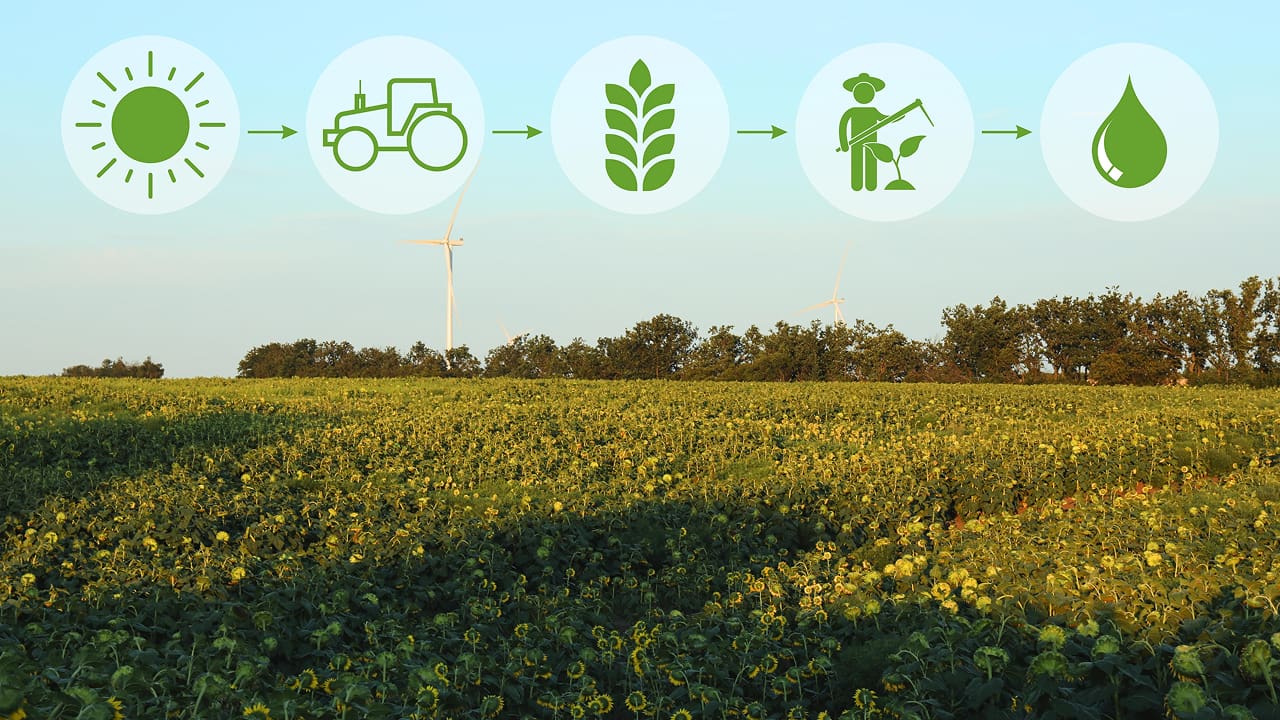
There are several reasons for agricultural expansion to be held, such as;
- Population Growth: As more people inhabit the planet, the demand for food increases. It drives the need to expand agricultural activities to meet the growing population’s nutritional requirements.
- Economic Management: Agricultural expansion is often influenced by economic factors. Such as the desire to boost income through increased production and trade of agricultural products.
- Technology Advancements: The development of new agricultural technologies enhances productivity and efficiency. It encourages farmers to expand their cultivation methods and adopt modern farming practices.
- Policy Scales: Government policies and initiatives can play a significant role in promoting agricultural expansion. It provides incentives and support to farmers for increased production.
Key Factors Influencing Rural Agricultural Development
By agriculture, first, we think about lands and food. So the expansion of food and land is all-important to increase the resources in our life. With the growing rate of population, it must secure both land and food resources properly.
Providing food to the population decreases the rate of hunger, food crises, and shortages. Filling dietary sources has improved the population psychologically, nutritionally, physically, and mentally.
There are several factors contributing to this cultivation increase.
- Geographical Conditions: The type of land available, climate, and topography influence the feasibility of agriculture in a particular region, determining the extent of expansion.
- Land Distributing System: The way land is distributed and owned in a region can impact agricultural expansion, with factors like land tenure systems playing a crucial role.
- Market Analysis: Understanding market demands and trends is essential for farmers to decide what crops to cultivate, influencing the expansion of specific agricultural activities.
- Cultural Importance: Cultural practices and traditions can shape the type of crops grown and farming methods employed, influencing the overall expansion of agriculture in a community.
Talking about the lands, it concerns the habitat, forestation, deforestation, and other tropical values. The farmers come first in our minds who worked with strategies. They maintained the land with the production of resources and economic value.
By agricultural expansion, farmers get profit and provide ease to the rest of the population. Agricultural importance caused several benefits for the people. It uplifts the small scale of farmers away from poverty and has improved their lives.
Impact of Agricultural Development
Agriculture has had a huge impact in the modern era, and the major impact is upon;
- Deforestation: Agricultural expansion can lead to the clearing of forests to make way for farming, contributing to deforestation and impacting ecosystems. This is one of the clearest examples of the deforestation effect climate change relationship, as reduced tree cover directly increases greenhouse gas emissions.
- Lack of Soil: Intensive farming practices may deplete soil nutrients, leading to decreased fertility and potential long-term damage to the land. It may include forest loss due to logging and mining.
- Loss of Biodiversity: The conversion of natural habitats into agricultural land can result in the loss of diverse plant and animal species, disrupting local ecosystems.
- Social and Economic Impacts: Agricultural expansion can have social and economic consequences, affecting local communities such as Amazonian Tribes by altering traditional ways of life and creating economic disparities.
Historical Background
A quick question about the history and current situation of the Earth can push our thoughts toward the comparison. Many questions arise about how the agricultural environment was in the beginning and how it is now in different time zones.
Some periods reveal the change in agricultural expansion.
| Era | Key Agricultural Developments |
|---|---|
| Paleolithic | Foraging, no cultivation |
| Neolithic | Domestication, early farming |
| Ancient | Irrigation, tools, and village economies |
| Middle Ages | Feudal farming, ploughs |
| Colonial | Cash crops, land colonization |
| Industrial | Mechanization, mass farming |
| Modern | Biotech, precision agriculture |
Early Agricultural Extension Era
Life was extra simple and it was the 1st century BC. They used to survive by hunting the animals and plucking the green foods from the plants. They had limited resources for cropping, money, and fewer technological techniques. There was a method to switch things via ”give and take”. Because of limited sources, this era was called the Stone Age. It has three different phases.
- The Paleolithic Age refers to the limited sources as only wild plants to cultivate agricultural expansion.
- The Mesolithic Age refers to the transition for better upgradation with wild cereals and plants.
- The Neolithic Age refers to the unique and less temporary strategies for agricultural remarks. The development and domestication of plants and animals concerning agricultural perspectives and the dawn of farming occurred.
Ancient Era
This era began from the 1st century BC to the 5th century BC. The trade occurred in three periods of the Bronze Age: the early, middle, and late Bronze Age.
- The early Bronze Age refers to the introduction of tools for agricultural expansion.
- The Middle Bronze Age enlarged the production of resources from a village to cities. It was the upgradation of tools and techniques.
- The late Bronze Age shifted the lower production to the next higher rate of productive level in agriculture expansion.
This new period was the beginning of food production, sheltering plants and animals, introducing the irrigation system, and the development of agricultural tools.
Middle Ages Era
After the ancient ages, there was the era called the Dark Ages or Middle Ages, which started from the 6th century BC to the 14th century BC. When the expansion of land and its resources began to expand, feudalism took place and created different psychological impacts on the people. The rich were becoming rich, and the poor were becoming more poor.
You Might Like to Read: Largest Rainforests in the World – The Top 12 Amazing Jungles
People’s behavior began to change with each other. They were eager to have the lands and desired to change the agricultural system besides their poor domestic lives. They used different tools for agricultural expansion. There were three-field systems and horse-drawn ploughs.
Agricultural Growth during Colonialism
This period began from the 15th century BC to the 18th century BC. It uplifted rich people to the prominent side while the poor suffered more. When progress initiated to the next level and people used to grab land and food, the civilized people tried to earn property and other benefits.
For that land section, colonization occurred. And the cultivation of plants took place, and the cash rates began to grow. This era is also known as the Early Modern Era, which refers to the discovery of land and the introduction of new crops.
The Industrial Revolution
The Industrial Revolution occurred at the end of the 18th century BC and lasted till the 19th century BC. The agricultural expansion got vast with the help of industrial machines and technologies.
It prompted the people’s interest in diversity via publications and farming advertisements published in newspapers on a large scale. The more people acquired knowledge of farming, the more they increased the production rates of resources.
“From primitive survival to digital farming, agriculture’s evolution has always mirrored society’s priorities and pressures.”
The Modern Era
This era began in the late 20th century BC and continued to the 21st century BC. Modern agriculture refers to advanced technologies and strategies to increase agricultural production, expansion, and resources.
It is more advanced and fast due to the industrial scale and led through non-commercial to commercial scale. As a genetically modified organism GMO, the projects took place on multiple levels with different rates of working. They work with advanced and digital technologies in industrial and agricultural units.
This era strengthened the advancement of genetically modified crops and better farming. It promoted agricultural expansion and development, socially and environmentally.
Types of Cultivation Expansion
There are several types of Cropland Expansion as follows;
Extensive Farm Growth
Agriculture Expansion usually involves the deep clearance of land with less harming the way of farming. The geographical lands are forest, desert, and the landscape of several countries.
It causes the drawbacks as categorized in the cons of agriculture expansion. (drawbacks are deforestation, habitat loss, and degradation of land). There is the possibility of opportunities for the people to secure their food.
Vigorous Farming Augmentation
The pros of agriculture expansion are expanding the sources of productivity on farms through intensified land use, technology, and investment. People use mechanical irrigation, chemical fertilizers, drip irrigation, and crop rotation.
Smallholder farmers began to use advanced techniques and other agricultural operations to lead on the commercial and non-commercial scale. It promotes the growth of food security and economic rates.
If people cannot manage, then it can lead to a global environment. Soil erosion, water pollution, and biodiversity loss are examples of agricultural problems.
Vertical Agriculture Expansion
The other phenomena of agricultural expansion consist of vertical and horizontal propagation. It includes greenhouse farming, hydroponics, aquaponics, and vertical farming. This tactic grows crops in controlled areas to reduce transportation costs and food miles.
Investment in technology, infrastructure, and energy can bring better inputs and yields via traditional farming methods. It solves the urban food challenges, land scarcity, and degradation of the environment. It may bring the graph down of cost or bring barriers also for conventional agriculture.
Transitioning Land
The expansion with the help of water causes the land conversion to different aspects. There are rural landscapes converted into domestic, commercial, and industrial regions. Logging clears the forests for agriculture, infrastructure, or other human activities.
The constructed land is roads, streets, buildings, factories, and infrastructures. This conversion of land can affect the environment and farming expansion as well. To avoid the crisis, people keep the policy to manage the land resources through different methods. Then, they promote sustainable development to compete with regional and global demands.
Environmental Impact
Several impacts on the environment are mentioned in the following lines;
- The emission of gases from the atmospheric environment saves the land and lives of living organisms. The gases methane, nitrogen, carbon dioxide, and so on play a role in the environment differently. And it is about 60 % of the global gas emission rate.
- Water pollution pollutes the land, residues, fields, grounds, and aquatic life. It unleashes the door for microbes, pests, soil erosion, and further negative causes. It harms the quality of plants, food, land, people, animals, and aquatic life.
- When the expansion of agriculture occur, the animals feel no secure living by themselves around other species or families. Animals lose their habitat due to deforestation and land conversion.
- When any natural consequence takes place on Earth, it disrupts the quality of soil. The demerits are soil erosion, compaction, salinization, acidification, and depletion of nutrients. These drawbacks occur due to irregular soil management, intensive farming methods, and environmental factors meeting stresses, reducing the fertility and productivity of the soil.
Agriculture and Deforestation: A Balanced Solution
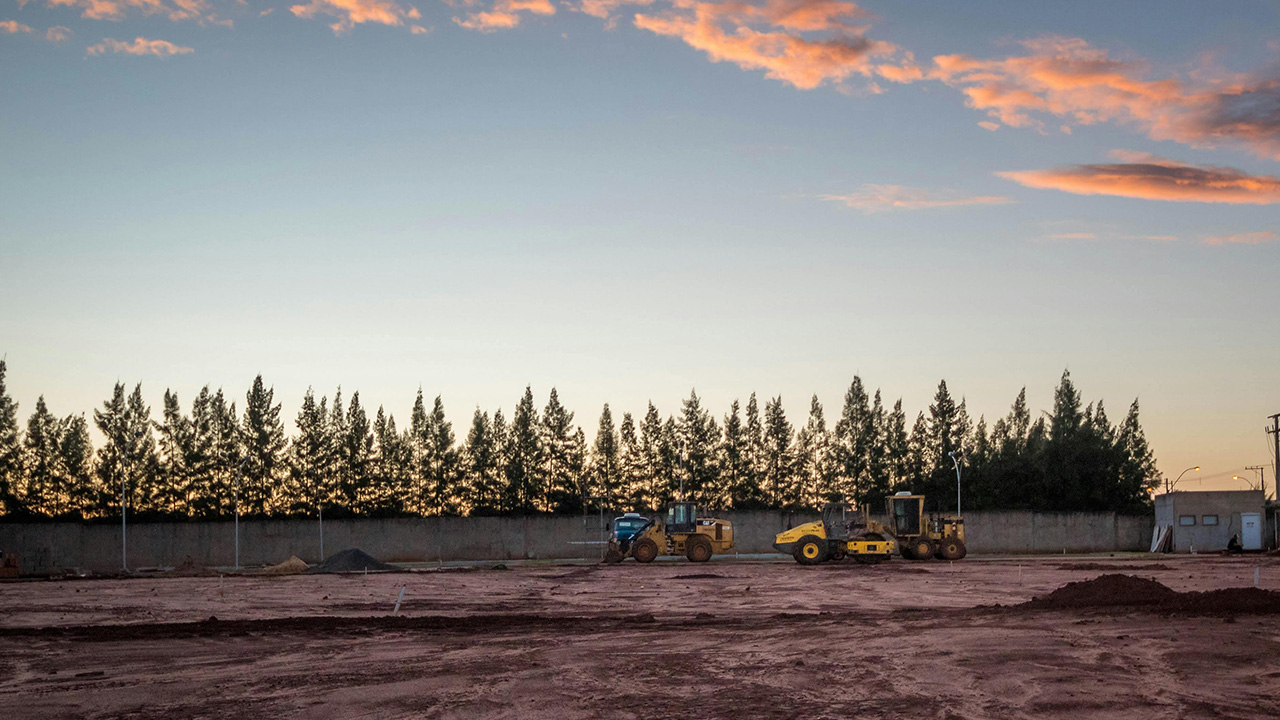
Although agribusiness growth is important for mankind in many ways, still we need to adopt sustainable and less destructive deforestation solutions to tackle this expansion. Such as;
Sustainable Farming
The different strategy to expand agriculture is its sustainability. It uses the 3R’s techniques to represent nature neat and clean. 3 R’s means reduce, reuse, and recycle. These keys keep the soil and other related environments fresh and not messy.
It saves crops from various perspectives and helps to promote organic matter. Also, it helps farmers to let them play their role more efficiently. Water conversion includes irrigation, water recycling, and water-saving technologies.
You Might Like to Read: The Impact of Deforestation on the Water Cycle
This method avoids artificial products and supports renewable energy like solar and wind. It helps to reduce and regulate greenhouse gas emissions and energy efficiency in agriculture.
Agroforestry Expansion
The agriculture in forest land combines the timber or its reserves with crops or the living animals in the same ecosystem. It helps to plant outdoor crops.
This agroforestry expansion helps to graze cattle in forested lands and build forested parks, bringing more wildlife, improving soil quality, storing more carbon, and better addressing climate change.
Such lands keep organic production almost and do not rely on chemicals. It helps to manage the land, biodiversity, and rural life. This expansion requires planning and implementing local suitability and balancing the objectives.
Organic Agriculture Expansion
The unique and natural-based organic products will promote fresh circumstances in the ecosystem. It does not use chemicals like pesticides, fertilizers, or genetically modified organisms (GMOs) to protect the soil and balance the environment.
It certifies the standards and labels the regulations so that consumers can have a balanced and developed lifestyle and develop the surroundings. People use different ecological principles to improve soil fertility, control pests and diseases, and improve the environment.
In an organic environment, everything counts as organic. It creates opportunities for the farmers to support rural lifestyles. Then they fill the needs of customers for their healthy food. And there are chances to cross the revenue, profit, and market increment.
Varieties of Vegetables
When the organic environment takes place, fresh crops are efficient. Its varieties turn up the table and increase the rate of fertility, overcome pests and diseases, and maintain a climate nontoxic.
Green revolution brings soil health and pushes the nutrient cycle to the next level. It improves soil structure and controls nutrient losses due to soil erosion by filling the agricultural needs and reduces production risks.
It refers to staple crops, cash crops, fruits, pulses, and vegetables and adding suitable crops to hybrids. Consumers show their preferences. The market trends that drive diversification of agricultural products to meet changing food preferences, cultural needs, and nutritional needs.
The Role of Technology in Modern Farming
The advanced era brought new technologies in the agricultural field. Those technologies are GPS-guided machines, drones, sensors, and automated systems. This movement helps to manage the practices, to increase efficiency, and to reduce project costs and resources.
It was necessary to keep an eye on agricultural activities for people to use satellites to observe the field, monitor the conditions of soil, and collect data for further experiments related to agricultural expansion.
People began to know about the artificial machines to protect, serve, and observe the land more conveniently without burdening human backs. The robotic tasks were planting, harvesting, spreading, and crop management.
Agricultural biologists can locate the problems in biodiversity by seven keys to initiate the experiment. First, they try to recognize the matter. Secondly, they observe the quantitative and qualitative perspectives. Thirdly, they make hypotheses and fourthly, they go for theories. To progress their experiments and make directions for policies to avoid and sustain the viability of life in the ecosystem.
Similarly, they achieve knowledge to keep concentration over the weather, forecasts, soil analysis, yield maps, and market data to inform decision-making and agricultural quality of the system.
Sustainable Agricultural Frameworks: Modern Solutions for a Greener Future
We have seen that, no doubt, the expansion of agriculture has increased food security, promoted economic growth, and rural development. But the side effects - deforestation and loss of biodiversity, climate degradation – require urgent and systemic action. Luckily, new approaches and promotions are beginning to be developed across the world. They promote balance between growth and environmental integrity.
Here are the key modern frameworks and sustainable approaches shaping agriculture:
Regenerative Cultivation
When compared to traditional farming, regenerative agriculture is not about doing less harm – it’s about creating positive outcomes. It prioritizes the restoration of soil organic matter, increased carbon sequestration, and diversity.
Through the use of cover cropping, composting, rotational grazing, and reduced tillage, regenerative agriculture reverses soil degradation. It is a big deal because nutrients and topsoil have been depleting at an alarming rate.
Agroecology
It is to connect the science of ecology with traditional knowledge, farming, and markets. It is local, oriented to the food system, and reduces the input of external chemicals. Unlike industrial monocultures that lead to biodiversity loss, agroecology promotes polycultures, intercropping, and predatory control of pests.
Carbon Farming
Carbon farming is the practice of using agriculture to trap atmospheric CO2 in plants and soil. By afforestation, agroforestry, biochar application, and managing pastures better, farmers can make their land a carbon sink.
This strategy is not only for the war against global warming, but it may also generate new revenue streams through carbon credits. It helps in solving economic sustainability.
Climate-Smart Agriculture (CSA)
CSA is an approach developed by the FAO to promote food security and enhance farmers’ capacity to adapt to climate change. The strategy also aims to mitigate greenhouse gas emissions. It integrates:
- Drought-resistant seeds
- Weather-resistant infrastructure
- Efficient irrigation systems
- Risk-management tools
This deals with multiple threats you report on – water shortages, food insecurity, and also trains agriculture to respond in real time to shifting climate patterns.
UN Sustainable Development Goals (SDGs)
Three SDGs are particularly relevant for the ongoing conversation on agricultural expansion:
- SDG 2 (Zero Hunger): Preventing hunger by encouraging sustainable farming and diet. It is directly tied to what you were saying about food security and reducing poverty.
- SDG 13 (Climate Action): Promotes adaptive farming and land use that mitigates the climate effects of deforestation and emissions from large-scale agriculture.
- SDG 15 (Life on Land): Targets halting deforestation, protecting biodiversity, and promoting reforestation.
These objectives together constitute a global action map for achieving sustainable agricultural growth without degrading ecological integrity.
Agricultural Innovation
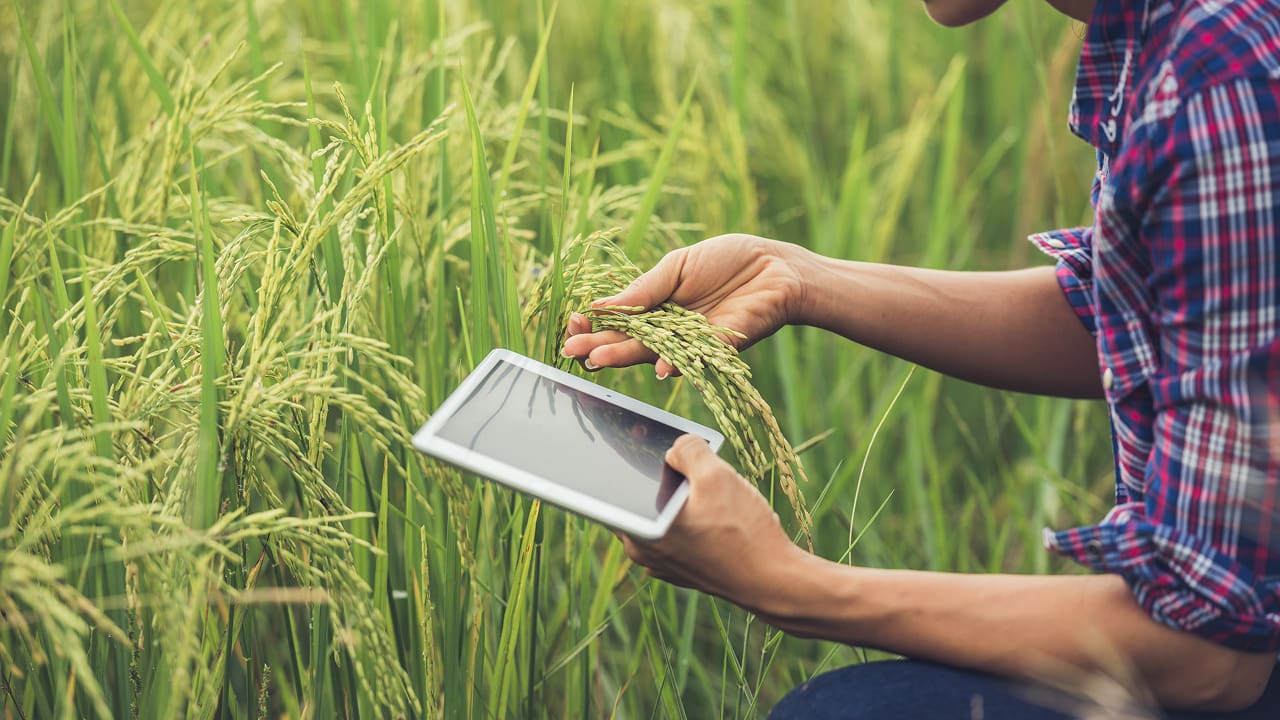
Underpinning these systems of innovation, new technologies are revolutionizing agriculture in ways never before possible. These technologies not only increase efficiency and decrease waste but also provide better environmental monitoring.
Satellite & Drone Mapping
Drones and satellites offer instant information about crop health, soil water levels, and pest presence. They enable farmers to make data-informed decisions – monitoring the stress in crops, reducing pesticide usage, and preventing over-irrigation. These technologies are particularly effective in areas which suffer from labour shortages or wacky weather.
Blockchain for Supply Chain Transparency
Blockchain can make all that traceability accessible. This adds responsibility and transparency in the chain and an ethical way of sourcing. It will help against land conflict, unfair trade, and environmental abuse. This may mean smallholder farmers have access to better markets and prices, which has an economic uplifting effect.
IoT in Precision Irrigation
Sensors on Internet of Things (IoT) devices measure soil health, temperature, and water levels. They activate high-efficiency irrigation to conserve water and keep crops in peak health. This promotes more sustainable water management approaches in specific drought-sensitive regions.
Statistical Data
The government has established several regulations for people related to this area, such as;
- More than 80% of countries have corporate laws governing agricultural extension.
- About 70% of countries have enacted land use planning laws. They effectively regulate agricultural development.
- About 90% of states require environmental assessments for large agricultural projects.
- Agriculture subsidies and incentives average 2-5% of government budgets in agricultural economics.
Agricultural Land-Use at the Global Level
- Almost 44% of the world’s habitable land – about 48 million km² – is used for livestock farming, meaning more than two-thirds of it is used for grazing, and a third for cropland.
- Agricultural emissions hit approximately 16.2 Gt CO₂eq in 2022 (10% higher than 2000), contributing around 30–37% of global emissions.]
- The area of irrigated cropland grew from 147 Mha in 1961 to 343 Mha in 2020, with 87% of this expansion taking place in the Global South.
Recent Deforestation Rates
- A record 6.7 million hectares of primary rainforest were lost in 2024 — about the size of Panama — mostly due to fires, emitting 3.1 Gt CO₂eq of carbon emissions.
- Amazon alone recorded a massive 150% rise in fires, scorching 22.4 mha more than the previous year.
- Agriculture is by far the largest driver of deforestation about 80% in the tropical forests, of which around 80% is for cattle ranching in Amazonian conversion.
Food & Agriculture Organization (FAO)
The FAO database provides comprehensive agricultural data since 1961. Analysis of global food production reveals that rice almost doubled from 1961 to 1996.
It is accounting for 57% of all production in 1996. Comparable patterns emerge when focusing only on rice production or considering data from Europe and the United States.
According to FAO and Our World in Data, agriculture spans approximately 4.78 billion hectares, which accounts for about 37% land worldwide.
| Category | 2024–2025 Data Highlights |
|---|---|
| Global agricultural land | 4.78 bn ha (37 % of all land) |
| Tropical forest loss | 6.7 M ha, ~3.1 Gt CO₂eq emissions |
| Amazon forest fires | +150 % from 2023 to 22.4 M ha |
| Crop irrigation | 343 M ha irrigated (201 5→2020) |
| Greenhouse gas emissions | 16.2 Gt CO₂eq from food/ag |
| Soil salinity | Affects 1.4 bn ha, –70 % yield risks |
Global Views on Rural Advancement
There are global views of agricultural expansion that occurred due to mismanagement and natural consequences.
In 2010, a company got able to stop the activity of deforestation by 2020. Because, global production began to destroy the forest. And since then, deforestation due to palm oil, soy, and cocoa have increased and the production is projected to continue increasing till 2050.
The disturbance of the environment impacts society. In Indonesia, private projects were going on which destroyed the rainforest. It made the life miserable of people and threatening for both people and wildlife. It stopped the food supplies due to the effects of deforestation.
In the Amazon region, there is rising food for livestock, and the planting of soybeans that disturbed due to deforestation. It emitted carbon dioxide and degraded biodiversity.
Like urban and rural places, Brazil suffered due to deforestation. But their nation put effort into combating deforestation and dealing with challenges and implementations. They made measures to protect the forest and other geographical and tropical lands.
Future Outlook
It’s the future of agriculture, the road to the planet’s ecological salvation, and the future of humanity. Here are the most significant trends forming that future, and that are connected to the emphasis on technology, environmental implications, and policy.
AI and Biotech Integration
Next-gen farming will revolve around artificial intelligence, from predictive analytics to estimate yield to AI-powered pest spotting. And with biotech tactics like gene editing (CRISPR), agriculture can become more resilient to climate change, resource-efficient, and productive.
Climate-Resilient Crops
Amid weather patterns in flux and severe climate events, heat, drought, and flood-tolerant crops are in high demand. Biotech companies and public researchers are working to develop crop varieties that thrive in extreme environments with less resource use. The idea is to conserve land and limit emissions.
Urban & Vertical Farming Innovations
Addressing land scarcity and reducing food miles, cities are adopting:
- Hydroponics and aquaponics
- Vertical farms in warehouses and on rooftops
- LED-controlled indoor grow systems
These developments move agriculture closer to consumers, easing the pressure on rural and forested lands.
International Policy Shifts
Several key efforts are driving agriculture in the world towards sustainability:
- The EU Green Deal targets 25% of all EU farmland to be organic by 2030.
- COP28 commitments have forced governments to link climate funding to sustainable agriculture and the prevention of deforestation.
- Private climate pledges (e.g., Amazon, Nestlé) invest in regenerative supply chains.
Conclusion
Finally, the expansion of agriculture is a benefit and a risk. It feeds billions. But if it is not managed properly, it can split ecosystems. We’ve reached the stage where it’s not optional not to balance production with preservation – it’s imperative. The future of farming that heals as it harvests, of policies and practices that ensure that food doesn’t come at the expense of forests.
“The greatest threat to our planet is the belief that someone else will save it.” – Robert Swan
